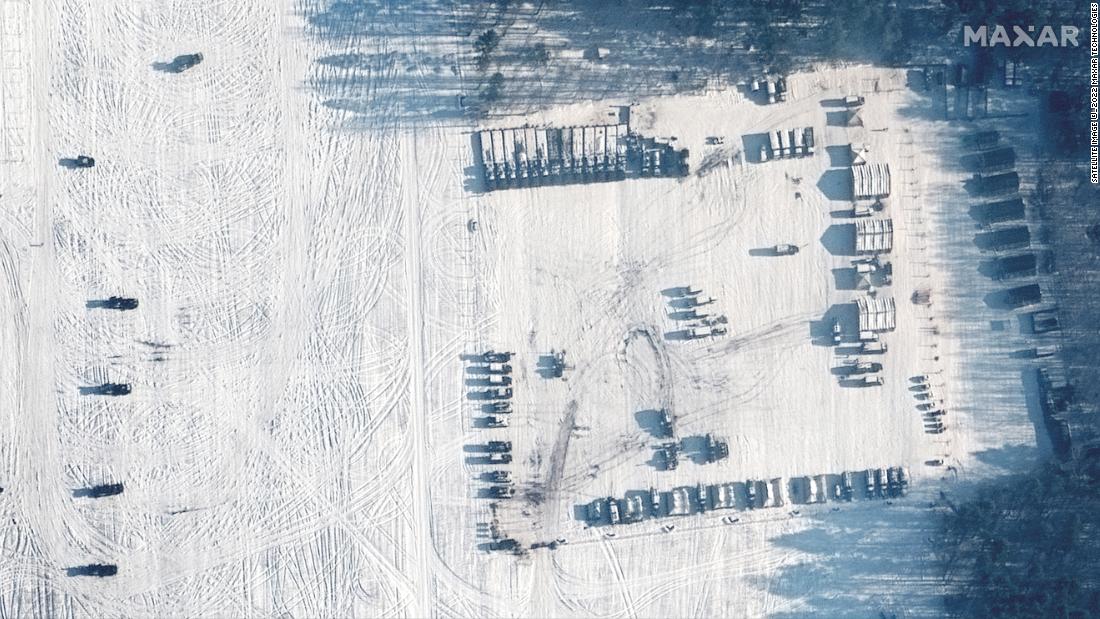Map: Here’s where an invasion could be launched
As frantic diplomatic efforts are made to avert war, analysts are warning that Russia’s military poses an immediate threat to Ukraine.
But if an invasion were to occur, it is not clear where it would begin. Russia has created pressure points on three sides of Ukraine — in Crimea to the south, on the Russian side of the two countries’ border, and in Belarus to the north.
Here are the three fronts Ukraine and the West are watching, and the recent Russian movements detected in each.
Most attention has been paid to the breakaway regions of Donetsk and Luhansk, where Ukrainian forces and Russian-backed separatists have been in conflict since 2014.
The foremost assumption of those watching Russian movements is that Moscow could boost the military might it already possesses in the region, therefore making eastern Ukraine the easiest position from which to launch an invasion.
Large amounts of weaponry were moved to the base late in 2021 before disappearing — including some 700 tanks, infantry fighting vehicles and ballistic missile launchers. Social media videos since show some of that equipment on trains and roads much further south in the Bryansk region, which is close to Ukraine. The armor and vehicles are identifiably from the same units that had pre-positioned at Yelnya.
Stephen Wood, senior director at satellite imagery company Maxar, told CNN: “It looks to me like a considerable amount of the vehicles [tanks, self-propelled artillery and other support vehicles] have departed from the northeastern vehicle park; additional armored vehicles departed from the more central vehicle park.”
“We are seeing a massive influx of vehicles and personnel in Kursk,” Konrad Muzyka, an expert in tracking military movements with Rochan Consulting, warned on Twitter.
Phillip Karber of the Potomac Foundation in Washington, who has also studied Russian troop movements in detail, told CNN this month: “Russia’s strongest offensive formation — the First Guards Tank Army, which is normally stationed in the Moscow area — has moved south 400 kilometers (250 miles) and is assembling in the optimum area for a rapid armored offensive on the Khursk-Kyiv invasion route.”
Belarus
Concerns have also grown over a vast build-up of Russian troops in Belarus, a country closely allied to Moscow that could provide another way into Ukraine.
Moscow’s deployment into Belarus is believed to be its biggest there since the Cold War, with “an expected 30,000 combat troops, Spetsnaz special operation forces, fighter jets including SU-35, Iskander dual-capable missiles and S-400 air defense systems,” NATO Secretary General Jens Stoltenberg said on February 3.
It is also the largest exercise the Belarusian armed forces have conducted at any time of year, according to the Center for Strategic and International Studies (CSIS). Russia’s Ministry of Defense claimed the purpose of the drills, called “Allied Resolve-2022,” included repelling “external aggression.”
Some fear the build-up points to a Russian plan to surge towards Kyiv from the north. One European diplomat told CNN earlier this month that the massing of forces is a “big, big worry,” noting this would be the missing piece that Moscow would need to launch a quick attack on the Ukrainian capital.
However, if Russia were to focus on the Belarusian border as its entry point to Ukraine, the route would be fraught with difficulties.
That region impeded Nazi forces during Operation Barbarossa, Germany’s doomed invasion of the Soviet Union, in 1941.
According to the Institute for the Study of War, “the marshes can be difficult, in some places likely impossible, for mechanized forces to traverse when wet.”
Crimea
The peninsula annexed by Russia in 2014 would provide a natural staging ground for any new operation, but it is unclear whether Moscow would attempt to launch a move into Ukraine from Crimea.
Then a new deployment was identified by Maxar for the first time Thursday near the town of Slavne on the northwest coast of Crimea, including armored vehicles.
Those new deployments were observed on the same day that several Russian warships arrived in Sevastopol, Crimea’s main port. The Russian Defense Ministry posted images Thursday of six large amphibious landing ships at the port.
Ukraine’s Navy responded that “Russia continues to militarize the Black Sea Region, transferring additional landing ships to put pressure on Ukraine and the world.”
Ukraine’s naval forces “are ready for development of any scenarios and provocations, to defend the country from the sea,” it added.
Any move into southern Ukraine could be aided by troops in Transnistria, the Russian-supported breakaway region of Moldova, where build-up has also been reported.
CSIS analysts say Russian troops could attempt a coup de main on Odessa, a Ukrainian port city the northwest of Crimea, by “sailing its amphibious ships straight into Odessa’s port and moving directly into the city.”
It calls such a move “a high gain but also a high-risk operation.” Odessa is a well-populated city and urban combat there would favor those defending it, while Russian forces would need to eliminate Ukraine’s air defenses and then link up with troops arriving from the east of the country.
CNN’s Tim Lister, Gianluca Mezzofiore and Olga Voitovych contributed reporting.
![]()


